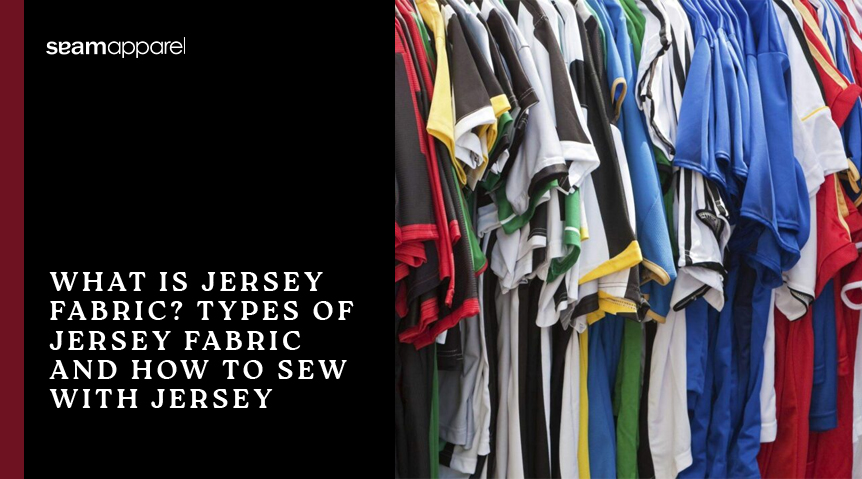Knit and woven fabrics can be broadly categorized into two categories.
Traditionally, horizontal and vertical threads crossed over each other to weave fabrics on looms. This results in a construction that is mostly inflexible and barely moves or stretches. Denim, shirting fabrics, and quilting fabrics are typical examples.
Similar to how you may knit a woolen scarf, knit materials are made up of threads that wind around one another. Knit textiles are elastic because the knitting process allows for a lot of mobility.
There are two varieties of knit fabric: interlock and jersey (single knit) (double knit). Although they are fairly similar, double knit is typically a little thicker and more robust. The most popular kind of knit fabric is called jersey.
What is cotton jersey fabric? Although wool was formerly the material of choice for making jerseys, cotton, cotton blends, and synthetic fibers like jersey viscose fabric and Polyester jersey fabricate are now more frequently used.
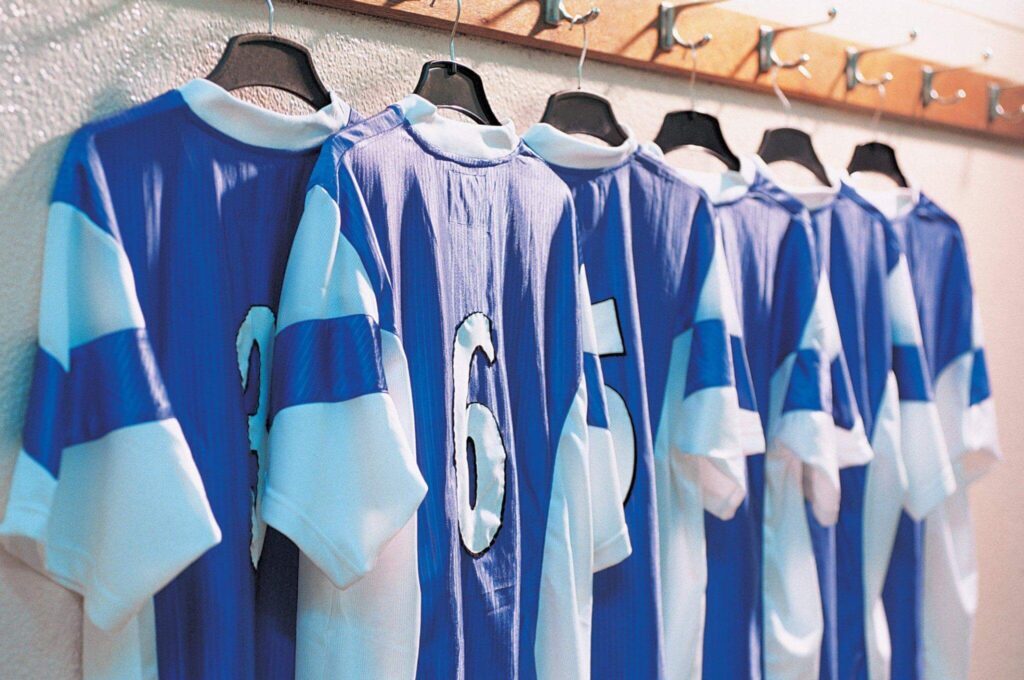

What Is Jersey Material?
Jersey fabric is frequently used to create garments with less structure or tailoring due to its elasticity and lightweight cotton jersey fabric.
What is jersey fabric made of? Jersey fabric isn’t woven on a loom. It is a knitted jersey fabric made by weaving a single yarn through loops that are arranged next to one another in a row using needles, hooks, or knitting machines.
Jersey can also be produced with wool, silk, and bamboo jersey fabric in addition to its normal fabric of cotton. There are numerous types of jerseys available, and each is more appropriate for particular purposes.


A viscose jersey is incredibly light and ideal for clothing with a drape, and a single-knit jersey has a wrong and right side. What is scuba jersey fabric? Dresses and jumpers are made of heavier, sturdier double-knit jerseys and materials like Ponte Roma and scuba.
From starting a fitness clothing line, Knit fabrics like jerseys are renowned for their softness and elasticity. It works well for many different types of clothing and is a common choice for dresses and T-shirts.
What Is Jersey Fabric Used For?
Jersey fabric is generally used by textile makers to create comfortable, casual items like underpants and t-shirt manufacturing. Although there are many different jersey fabric varieties, certain of them may be used for heavier-duty purposes by producers.
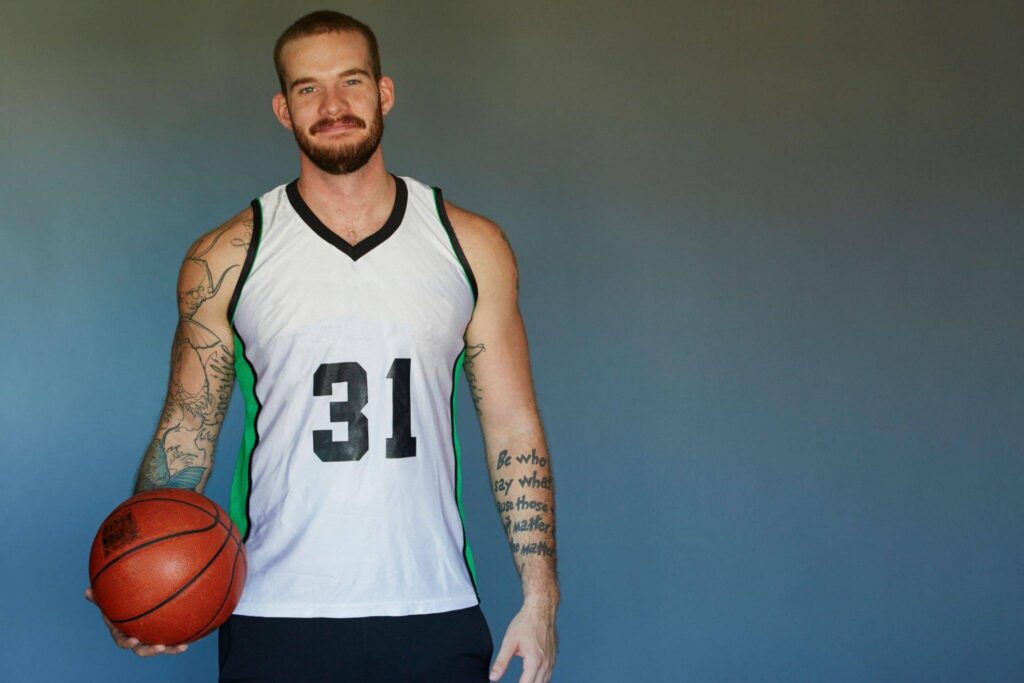

Jersey fabric is frequently used to create garments with less structure or tailoring, such as different types of t-shirts and loungewear, due to its lightweight and stretch. Additionally, it can be used to create domestic products like bedsheets.
Of course, the jersey material fabric is for athletic clothing. Nowadays, synthetic fibers are most frequently used in sports apparel manufacturers, although jersey knit fabric is also frequently used in athletic shirts, tank tops, and shorts.
The majority of uses for jersey fabric still revolve around clothing, but bedding is a significant non-apparel application. Jersey fabric is frequently used by textile makers to create blankets, pillowcases, and bed sheets due to its tight-knit softness.
Characteristics of Jersey Fabric
We’ve already mentioned that wool from sheep was originally used to make jersey garments. Jerseys come in a variety of materials nowadays, including cotton, silk, hemp, bamboo, viscose, and rayon. Even luxurious knit fabrics made of vicuna and alpaca exist! Although wearing such jewels is incredibly enjoyable, they are expensive and require careful care.
Fabrics made of jersey knit might be light, medium-weight, or heavy. They are available in numerous jersey prints fabric and solid colors. Considered a unisex cloth because it is stretchy and comfy to wear due to the weaving process, it is a perfect addition to any wardrobe for men, women, or children.
What is silk jersey fabric? And what makes it so beloved?
Unlike non-stretchy fabrics like satin or silk taffeta, jersey textiles are excellent for clinging and closely-fitting garments since they do not restrict your movement. Jersey knits provide for movement!
Elasticity
Your material’s level of softness is determined by the fibers it is made of as well as the finish. A rough jersey fabric comes around only occasionally.
Softness
Strong and abrasion-resistant knit fabric.
Durability
This cloth resists wrinkles through its fundamental composition. Additionally, after stretching, it returns to its former shape with ease.
Roughness resistance
The draping is easier the thinner the fabric is. While heavier fabrics are sturdier, lighter, translucent jersey fabrics may have the propensity to curl at the edges.
Drapability
Jersey knit is incredibly versatile. From the best undergarments and lightest T-shirts to cozy cardigans, roll necks, winter dresses, and sweaters, the applications are many.
Adaptability
Several types of jersey fabrics with varying textures use, and prices are classified based on the composition of the fabric. Natural fibers will be our main focus because they are hypoallergenic and have a wonderful hand feel.
How to Sew With Jersey Fabric
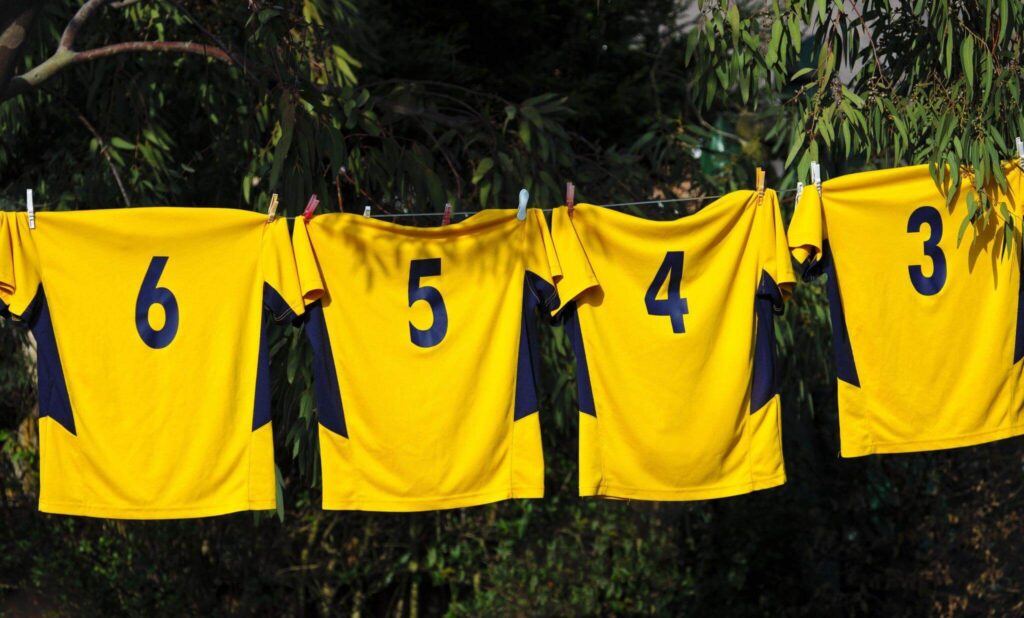

Knowing how to sew with jersey fabric is crucial if you’ve never used it before so that your project turns out poorly. Let’s Start
Choose The Proper Fabric
Choosing the appropriate fabric for your project is the first step in sewing with jersey fabric. The information above can be helpful but keep in mind that some jersey fabrics, particularly viscose, have greater elasticity and are more difficult for beginners to sew with.
Additionally, you should think about the type of clothing you’re sewing and how much flexibility or drape it requires. Next, decide which color or design you choose while making sure you have enough fabric for your project.
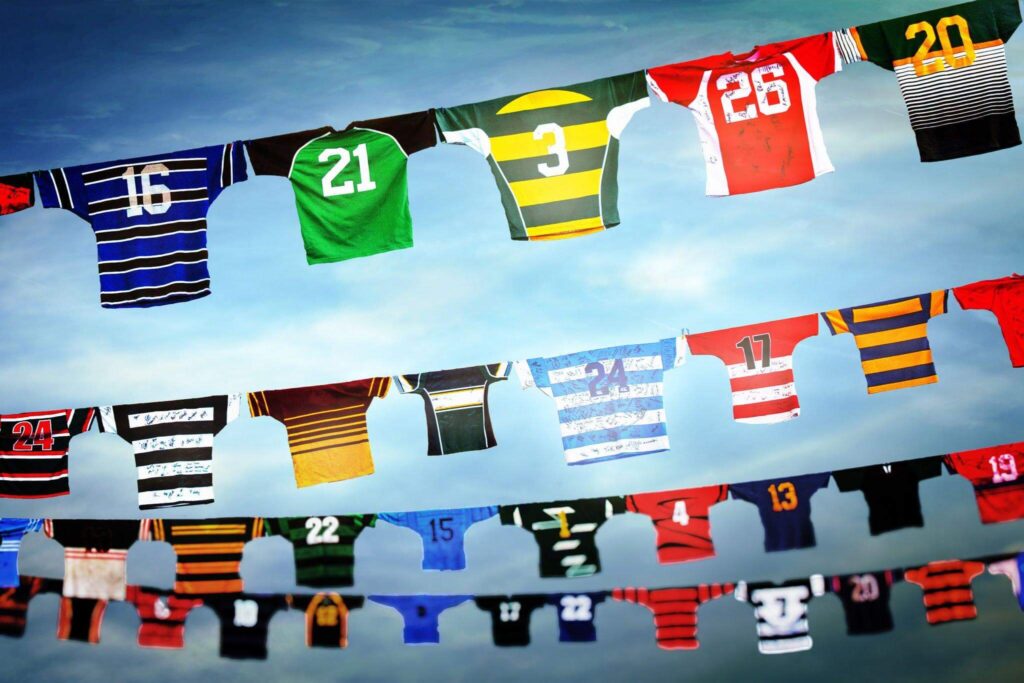

Wash the Fabric
You should pre-wash the fabric if it is made of cotton, viscose, or any material that is prone to shrinking. Pre-washing is essential to prevent possible shrinking before using the material for sewing. You’ll know exactly what you’re working with and subsequent shrinking won’t be as much of a concern if you do it this way.
Correct Sewing Machine Settings
While conventional machine needles will pierce the threads and cause skipped stitches or fabric laddering, ballpoint pins, and sewing machine needles will simply pass through the jersey.
When cutting out jersey fabric, sharp scissors are necessary because blunt ones will ‘pull’ the fabric as you cut it, causing strained edges before you even start sewing!
Ballpoint Needle
For every machine, you must first have a box of jerseys or a pen with a ballpoint tip. Since they have a somewhat blunter end than a standard sewing needle, they won’t ladder the knitted fabric’s structure. As you can see, they are available in several sizes much like standard sewing needles.

When you’re prepared to sew your jersey fabric, a ballpoint needle is the first tool you’ll need to utilize. Because of their slightly rounded tip, ballpoint needles may easily pass through fibers without yanking or ripping them.
Stepping Foot
When sewing with elastic materials like jersey knits, a walking foot is advised. This is so that the cloth won’t stretch out of control because they can manipulate both layers of the fabric at once.
Stitch in a Z-Wave
Because they prevent the seams from stretching along with the fabric, straight stitches are not recommended for stretch textiles. The stitches may unravel and break as a result of this. Instead, you should use a zigzag stitch to prevent unraveling and allow the seams to flex with the fabric.
Twin Needle
You should use a twin needle to sew the hems. The use of twin needles and a zigzag stitch allows the hems to stretch further. This strengthens the hems and prevents the clothing from getting unhemmed.
Sewing Machine
If your fabric is stretching while being sewed, lowering the foot pressure may help if your machine permits it. If the foot pressure is too high, the foot will tug on the fabric as you sew, resulting in the dreaded wavy seams. The dogteeth in your machine will guide the cloth through as you sew.
Sew gently. If your sewing machine has speed control, choose the slowest setting. If it doesn’t, lightly touch the foot pedal.
Before beginning to sew the finished item, always sew a sample or the at least use a scrap of fabric to practice your stitching.
Test It On A Swatch
Before starting on the project you want to make, practice some seams on a piece of fabric if you’re apprehensive about sewing with a cloth. This will help you get the length and give of your threads just correct.


What Clothes Are Made From Jersey Fabric?
Jersey is typically used to create vests, jumpers, pajamas, skirts, and a variety of other common clothing items T-shirts, sweatshirts, sportswear, dresses, tops, and underwear are the most common items produced from jerseys and are hence popular choices for apparel. Jersey clothing tends to fit more snugly to the body than clothing made of woven fabric because of its elasticity, which allows it to better conform to body contours.
Type of Jersey Fabric
Jersey is a knit fabric rather than a woven one. Jersey has greater stretch and gives as a result. Concerning the knit style, there are two primary forms of jersey fabric:
- Single jersey: A knitted fabric with a single thickness made from fine yarn. It is typically knitted in a stocking stitch, but it can also be done in rib jersey fabric stitch or with other knitted-in designs.
- Double jersey or interlock: Two layers of jersey fabric are knitted together, sandwiching their wrong sides. For one stitch, the yarn is alternately knit on the front and back pieces of the cloth, and for the subsequent stitch, on the back piece of the fabric. In comparison to the single jersey, the resulting fabric is thicker, stronger, and has a smooth surface.
- Jacquard jersey: The fabric is knitted with a pattern (sometimes rather intricate) to add texture. You can use yarn in a single color or a variety of colors.
- Intarsia jersey: Knitting patterns that create isolated patches of pure color in the fabric using two or more colors. Manufacturing this is more expensive than the pattern onto the print jersey fabric.
- Clocque jersey: French meaning “blister” or “blistered,” clocqué jersey fabric with a raised weave pattern and a puckered edge.
- Slouchy jersey: Because irregular slub yarn is used when weaving jersey fabric, slub jersey has a textured pattern.

Is Jersey Fabric Hard To Sew?
Although working with a jersey can seem intimidating, it is quite quick to sew with, doesn’t tear, is simple to wash, and is simple to fit. Selecting a single-knit jersey with good recovery will make it simpler for you if you’re new to working with jersey textiles.
Jersey Sewing Advice
- What to make with jersey fabric. When cutting with the fabric’s exact grain, the jersey will be less prone to warp when sewn. Make sure the fabric isn’t hanging off a table when you’re cutting, since this may cause the cloth to stretch, so cut on a flat surface.
- Iron bias-cut pieces onto the edge before sewing because interfacing will stop the jersey from expanding as you stitch. To guarantee a tidy finish, make sure the bias strips are trimmed uniformly.
- The ideal needles for sewing with jerseys are ballpoint or stretch needles because their rounded tips will glide through the material without skipped stitches or ladders. There are also twin ballpoint needles available.
- Straight stitches will rip out as soon as the fabric is stretched since they will not stretch with the jersey. When sewing with a jersey, a narrow zigzag stitch is an excellent alternative. Try different stitch lengths and widths to discover the one that works best for you. Recommending a 3mm stitch length and a 5mm stitch breadth.


FAQs
How Is Jersey Fabric Sewn?
Image showing what jersey fabric looks like. Jersey fabric kinds and instructions for sewing with jersey the ideal method for jersey clothing is to turn how to hem jersey fabric to the back and topstitch it in place from the front. Either use a twin needle and a straight stitch to sew it.
Which Type Of Stitch Is Ideal For A Jersey?
Using your machine’s default zigzag setting is the simplest way to sew jerseys. A stitch length of 2mm and a width of 2.5m will work for most jerseys, but you can make a small adjustment around these values to acquire the proper specifications for your fabric.
Does Sewing A Jersey Require A Unique Needle?
With a Jersey Needle, knitted materials devoid of spandex can be stitched. The Jersey Needle’s (SUK) rounded tip can penetrate gaps in the fabric by pushing the fibers to the side of the fabric. As a result, the needle guards against damage to the loop.
Final Words
Because of soft jersey fabric and its degree of inherent flexibility, jersey fabric is favored. Although all jersey textiles are knit materials, there are various types of jersey fabric with various characteristics. You can choose the material that will work best for your sewing project by understanding the characteristics of each one.

